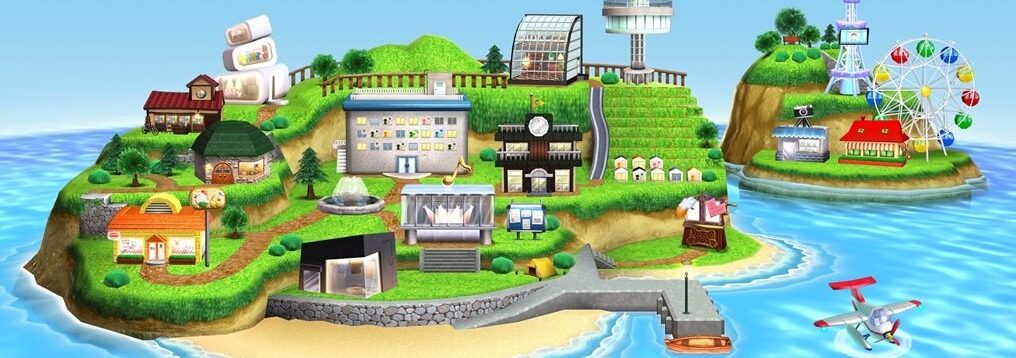What happened to: ‘Tomodachi Life’?
Ever wish you could surprise your closest inner circle with a trip to a private island where you could pretend things were normal, even if just for a brief moment? Unlike Kim Kardashian, my closest inner circle would include the likes of Azula from the hit animated TV series Avatar: The Last Airbender, award-winning actor Brie Larson, and Lonk from Pennsylvania. And as you might already be able to tell, normal isn’t the word you would use to describe my private island, one that has become reality courtesy of Tomodachi Life.
Tomodachi Life is one of the many gems in Nintendo’s line-up of Mii games, and was first released in Japan in 2013, followed by a worldwide release in June 2014. This game is emblematic of Nintendo’s philosophy in the bygone era of 2013 – one that was unorthodox, but definitely not lacking in charm.
You start Tomodachi Life by creating a Mii in your likeness. This includes the possibility of personality and text-to-speech voice customisation. Having done this, you are then introduced to your island, which you are tasked to populate with any Mii you can dream up – be it celebrities, fictional characters, or friends. Over time, you unlock different buildings, like the concert hall – where you can write hilarious songs for your Miis to perform solo or in a group – and several other locales that bring your island to life.
Tomodachi Life contains the hallmark gameplay elements of virtual pet games, such as feeding and clothing your pets (or in this case, your islanders). This may not be particularly engaging, but the real hook is the way the game sets your Miis to interact with one other, and the strange scenarios it is able to cook up. Just to give you an example, Guy Fieri’s declaration of love to Isabelle from Animal Crossing may be rudely interrupted by Sasuke and Luigi, who have also – apparently – fallen for Isabelle, making for a tense but humorous situation.
Even the most mundane affairs in Tomodachi Life are oozing with quirky charm, and it’s hard not to get a kick out of an islander rolling around the floor in boredom, or out of an unlikely bunch of Miis having fun together with a Wii U
Islanders have likes and dislikes, friends, enemies, and lovers, and all these relationships are especially entertaining because of the real personalities they are based off.
There is no end goal in Tomodachi Life: it’s a fun, casual, pick-up-and-play game. No deep emotional investment is involved, as Miis can’t die (like in The Sims) and – thankfully – won’t miss you à-la Animal Crossing after a prolonged absence from the game.
The lack of gameplay meat on this game’s bones may be understandably off-putting to some. But personally, I enjoyed the surreal humour the game offered far too much to be bothered about it.
Despite how highly I think of this game, I have found some issues with it. One of its most glaring ones is that it is fairly conservative in its romance options, only allowing romantic relationships between islanders of the opposite sex. Given that they have are a fairly large role in this game (your Miis can date and get married), it’s a disappointing absence – one I noted all the way back when the game was released.
A Tomodachi Life sequel is near the top of my unlikely wish list of Nintendo Switch games. The series could definitely be improved by being more inclusive of LGBTQ+ identities, in addition to increasing the customisation options for the Miis and their living spaces, by adding more gameplay content and by updating the graphics. The latter would modernise the game and make it fit for the comparatively more powerful gaming console that is the Nintendo Switch.
I’d like to think there is somewhat of a financial incentive to produce a sequel to Tomodachi Life given the success of Animal Crossing: New Horizons. After all, just like Animal Crossing, Tomodachi Life is packed with screenshot-and clip-worthy moments – a function that was made possible in the 3DS game by equipping the console’s X and Y buttons for the purpose of screen-capturing. With the players sharing clips from the game – practically advertising it, – I can see a Tomodachi Life sequel reaching commercial success the same way Animal Crossing did.
Of course, it all comes down to Nintendo. After all, upon inspection of the brand’s current modus operandi, there is evidence that they are most certainly distancing themselves from the charming and captivating – if not clunky – elements of the 3DS/Wii U era. Instead, they are moving towards a slightly sleeker and more streamlined philosophy – one that the Switch’s game library, design and UI are trying to embody. All this implies that Miis are being phased out.
On the bright side, there have been spiritual successors to Tomodachi Life, such as Miitomo, a delightful, but discontinued phone app, and Miitopia, essentially a Tomodachi Life RPG (which I also highly recommend). Miitopia was released on the 3DS not too long ago (in 2017), so it may be a little too soon to say that Mii-focused games are dead in the water. However, the relative absence of Miis as a whole from the Nintendo Switch library makes my optimism cautious at best.
In the end, only time will tell, and I would love to be pleasantly surprised if Nintendo’s large new audience on the Switch were able to experience the absurdity and hilarity that is Tomodachi Life.

Comments